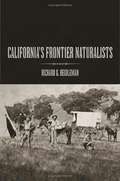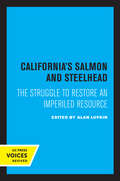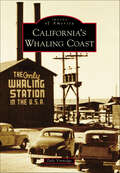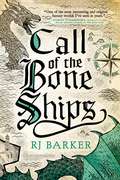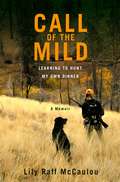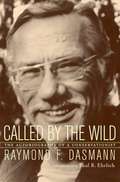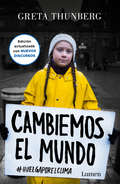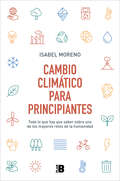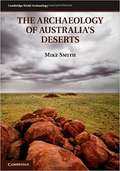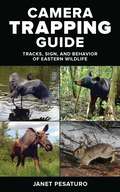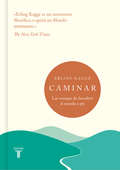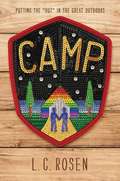- Table View
- List View
California's Draft Bay Delta Conservation Plan
by The National Academy of SciencesThe San Francisco Bay Delta Estuary is a large, complex estuarine ecosystem in California. It has been substantially altered by dikes, levees, channelization, pumps, human development, introduced species, dams on its tributary streams and contaminants. The Delta supplies water from the state's wetter northern regions to the drier southern regions and also serves as habitat for many species, some of which are threatened and endangered. The restoration of water exacerbated tensions over water allocation in recent years, and have led to various attempts to develop comprehensive plans to provide reliable water supplies and to protect the ecosystem. One of these plans is the Bay Delta Conservation Plan (BDCP). The report, A Review of the Use of Science and Adaptive Management in California's Draft Bay Delta Conservation Plan,determines that the plan is incomplete in a number of important areas and takes this opportunity to identify key scientific and structural gaps that, if addressed, could lead to a more successful and comprehensive final BDCP. The plan is missing the type of structure usually associated with current planning methods in which the goals and objectives are specified, alternative measure for achieving the objectives are introduced and analyzed, and a course of action in identified based on analytical optimization of economic, social, and environmental factors. Yet the panel underscores the importance of a credible and a robust BDCP in addressing the various water management problems that beset the Delta. A stronger, more complete, and more scientifically credible BDCP that effectively integrates and utilizes science could indeed pave the way toward the next generation of solutions to California's chronic water problems.
California's Fading Wildflowers: Lost Legacy and Biological Invasions
by Richard A. MinnichEarly Spanish explorers in the late eighteenth century found springtime California covered with spectacular carpets of wildflowers from San Francisco to San Diego. Yet today, invading plant species have devastated this nearly forgotten botanical heritage. In this lively, vividly detailed work, Richard A. Minnich synthesizes a unique and wide-ranging array of sources--from the historic accounts of those early explorers to the writings of early American botanists in the nineteenth century, newspaper accounts in the twentieth century, and modern ecological theory--to give the most comprehensive historical analysis available of the dramatic transformation of California's wildflower prairies. At the same time, his groundbreaking book challenges much current thinking on the subject, critically evaluating the hypothesis that perennial bunch grasses were once a dominant feature of California's landscape and instead arguing that wildflowers filled this role. As he examines the changes in the state's landscape over the past three centuries, Minnich brings new perspectives to topics including restoration ecology, conservation, and fire management in a book that will change our of view of native California.
California's Frontier Naturalists
by Richard G. BeidlemanThis book chronicles the fascinating story of the enthusiastic, stalwart, and talented naturalists who were drawn to California's spectacular natural bounty over the decades from 1786, when the La Pérouse Expedition arrived at Monterey, to the Death Valley expedition in 1890-91, the proclaimed "end" of the American frontier.
California's Salmon and Steelhead: The Struggle to Restore an Imperiled Resource
by Alan LufkinMillions upon millions of salmon and steelhead once filled California streams, providing a plentiful and sustainable food resource for the original peoples of the region. But over the years, dams and irrigation diversions have reduced natural spawning habitat from an estimated 6,000 miles to fewer than 300. River pollution has also hit hard at fish populations, which within recent decades have diminished by 80 percent. One species, the San Joaquin River spring chinook, became extinct soon after World War II. Other species are nearly extinct. This volume documents the reasons for the decline; it also offers practical suggestions about how the decline might be reversed. The California salmon story is presented here in human perspective: its broad historical, economic, cultural, and political facets, as well as the biological, are all treated. No comparable work has ever been published, although some of the material has been available for half a century. In the richly varied contributions in this volume, the reader meets Indians whose history is tied to the history of the salmon and steelhead upon which they depend; commercial trollers who see their livelihood and unique lifestyle vanishing; biologists and fishery managers alarmed at the loss of river water habitable by fish and at the effects of hatcheries on native gene pools. Women who fish, conservation-minded citizens, foresters, economists, outdoor writers, engineers, politicians, city youth restoring streambeds—all are represented. Their lives—and the lives of all Californians—are affected in myriad ways by the fate of California's salmon and steelhead. This title is part of UC Press's Voices Revived program, which commemorates University of California Press’s mission to seek out and cultivate the brightest minds and give them voice, reach, and impact. Drawing on a backlist dating to 1893, Voices Revived makes high-quality, peer-reviewed scholarship accessible once again using print-on-demand technology. This title was originally published in 1991.
California's Whaling Coast
by Dale VinnedgeYankee whaling, shore whaling, and modern whaling were sometimes occurring simultaneously. Each type of whaling went through periods of discovery, stability, and then a gradual decrease as the products lost their markets or the number of whales began to wane as some species moved toward commercial if not actual extinction due to over-fishing. Small whaling operations from California, called shore whaling, continued from the 1850s until Secretary of Commerce Maurice Stans (1969�1972) whistled down the industry in 1971.
Call Me Tree / Llámame árbol: Llámame Árbol
by Maya GonzalezAn imaginary bilingual English/Spanish tale of self-discovery told by a child who grows, learns about the natural world, embraces others, and is free to become who they are meant to be--a child as unique as a tree.What does it mean to be like a tree?For one young child, it all beginsas a tiny seedthat is free to growand reach out to otherswhile standing strong and tall-just like a tree in the natural world. With this gentle and imaginative story about becoming your fullest self, Maya Gonzalez empowers young readers to dream and reach... and to be as free and unique as trees.
Call of the American Wild: A Tenderfoot's Escape to Alaska
by Guy Grieve"A wild adventure. ” --Independent A man, an axe, and a dog named Fuzzy . . . let the adventure begin! Trapped in a job he hated and up to his neck in debt, Guy Grieve’s life was going nowhere. But with a stroke of luck, his dream of escaping it all to live in the remote Alaskan tundra suddenly came true. Miles from the nearest human being and armed with only the most basic equipment, Guy built a log cabin from scratch and began carving a life for himself through fishing, hunting, and diligently avoiding bears. Packed with adventure, humor, and insight, this is the gripping story of an ordinary man learning the ways of the wild.
Call of the Bone Ships (The Tide Child Trilogy #2)
by RJ BarkerA brilliantly imagined epic fantasy of honor, glory, and warfare, Call of the Bone Ships is the action-packed sequel to David Gemmell Award-nominated RJ Barker's The Bone Ships. Dragons have returned to the Hundred Isles. But their return heralds only war and destruction. When a horde of dying slaves are discovered in the bowels of a ship, Shipwife Meas and the crew of the Tide Child find themselves drawn into a vicious plot that will leave them questioning their loyalities and fighting for their lives.The Tide Child TrilogyThe Bone ShipsCall of the Bone ShipsFor more from RJ Barker, check out:The Wounded KingdomAge of AssassinsBlood of AssassinsKing of Assassins
Call of the Mild: Learning to Hunt My Own Dinner
by Lily Raff MccaulouWhen Lily Raff McCaulou traded in an indie film production career in New York for a reporting job in central Oregon, she never imagined that she'd find herself picking up a gun and learning to hunt. She'd been raised as a gun-fearing environmentalist and an animal lover, and though a meat-eater, she'd always abided by the principle that harming animals is wrong. But Raff McCaulou's perspective shifted when she began spending weekends fly-fishing and weekdays interviewing hunters for her articles, realizing that many of them were more thoughtful about animals and the environment than she was. So she embarked upon the project of learning to hunt from square one. From attending a Hunter Safety course designed for children to field dressing an elk and serving it for dinner, she explores the sport of hunting and all it entails, and tackles the big questions surrounding one of the most misunderstood American practices and pastimes. Not just a personal memoir, this book also explores the role of the hunter in the twenty-first century, the tension (at times artificial) between hunters and environmentalists, and new models of sustainable and ethical food procurement.
Call of the Wild: My Escape to Alaska
by Guy GrieveGuy Grieve's life was going nowhere - trapped in a job he hated, commuting 2,000 miles a month and up to his neck in debt. But he dreamed of escaping it all to live alone in one of the wildest, most remote places on earth - Alaska. And just when he'd given up hope, the dream came true. Suddenly Guy was thrown into one of the harshest environments in the world, miles from the nearest human being and armed with only the most basic equipment. And he soon found - whether building a log cabin from scratch, hunting, ice fishing or of course dodging bears in the buff - that life in the wilderness was anything but easy...Part Ray Mears, part Bill Bryson, CALL OF THE WILD is the gripping story of how a mild-mannered commuter struggled with the elements - and himself - and eventually learned the ways of the wild.
Called by the Wild: An Autobiography of a Conservationist
by Raymond Fredric DasmannThis delightful memoir tells the story of an unpretentious man who helped create and shape today's environmental movement. This autobiography is a story of international conservation action and intrigue, a moving love story, and a gripping chronicle of an exceptional life.
Calls of Ducks & Geese
by Lang ElliottUnique book and audio CD package Features sounds of 50 North American waterfowl species A full-color photograph complements each bird's description Learn the songs and calls of 50 waterfowl species found across North America. An audio soundtrack combined with detailed text and beautiful color photographs make this a useful guide for any birder. From the distinctive quack of the American black duck and whistled "peep" of the cinnamon teal to the cuckoolike call of the pied-billed grebe and yodel of the yellow-billed loon, this package covers waterfowl species in an easy-to-use format. Includes dabblers, sea ducks, geese, and other waterfowl.
Cambiemos el mundo (Nueva edición actualizada): #huelgaporelclima
by Greta Thunberg«SOY GRETA THUNBERG, TENGO QUINCE AÑOS Y HABLO EN NOMBRE DE LA JUSTICIA CLIMÁTICA. ESTE ES UN GRITO DE SOCORRO.» El cambio climático pronto será irreversible. Los políticos no van a reaccionar. Tal vez tú sí. #huelgaporelclima Greta Thunberg es una adolescente sueca que se ha propuesto luchar contra el cambio climático y por la supervivencia del ser humano. En agosto de 2018 comenzó una huelga escolar los viernes que ahora siguen cientos de miles de estudiantes en todo el mundo. En diciembre de 2018 fue invitada por las Naciones Unidas a hablar en la cumbre sobre el cambio climático. Poco después atravesó Europa en tren para llegar a la fría ciudad suiza de Davos, donde se alojó en una carpa, para hablarante los líderes del mundo en el Foro Económico Mundial: «Quiero que entren en pánico -les dijo-. Quiero que actúen como si nuestra casa estuviera ardiendo. Porque así es». Hoy, Greta Thunberg es candidata al Premio Nobel de la Paz. Esta nueva edición ampliada recoge todos sus discursos hasta hoy. La crítica ha dicho...«Greta Thunberg, la activista que vino del frío para frenar el calentamiento global, es la chica de moda de los medios de comunicación, la Juana de Arco del siglo XXI, la Agustina de Aragón de todo el planeta, la nueva María Pita. De vez en cuando aparece en la historia la figura de una joven sin mácula que revoluciona su entorno por su lucha sin descanso por su causa justa.»Rosa Martí, Esquire «Greta arde de autenticidad, es un puro aullido de desesperación y de incredulidad ante nuestra ceguera.»Rosa Montero «Con su discurso ha irrumpido como un ciclón desde la sociedad civil sueca para poner en primer plano la lucha contra el cambio climático. [...] La generación posmilenial tiene un nombre y una autora clave a la que seguir.»El Ojo Crítico (RNE 1) «Si la humanidad gana un día la batalla contra el cambio climático podrá agradecérselo a esta joven testaruda que armada con un gorro de lana y sus trenzas ha tenido éxito donde miles de científicos y militantes han fracasado.»Le Soir «Un libro que todos los adultos tendrían que leer y que consideramos casi lectura obligada para las nuevas generaciones.»Qué Leer «Greta Thunberg se atreve a decir lo que casi todos callan.»Lola Fernández, Cosmopolitan «Apenas 72 páginas cargadas de lucidez, rebeldía e impaciencia.»Tino Pertierra, La Opinión «Invitar a Greta Thunberg es un acto de alto riesgo. La adolescente sueca de dieciséis años ha irrumpido como un ciclón desde ese ente abstracto llamado sociedad civil para devolverla lucha contra el cambio climático a un primer plano. Su retórica deslenguada ha cautivado a cientos de miles de estudiantes y la ha convertido en una suerte de estrella pop. Su estela deja altas dosis de reproches a unas élites habituadas a la complacencia y acostumbradas a emplear ante los jóvenes un discurso cargado de buenas intenciones, pero a menudo vacío y paternalista.»El País «La generación Z o post millenial tiene un nombre de mujer: Greta Thunberg, una escolar sueca de dieciséis años cuya protesta contra la inacción de los gobiernos frente al cambio climático se ha extendido como un reguero de pólvora por numerosos países.»La Vanguardia «Todo es inquietante en Greta Thunberg. Su mirada, su sonrisa jamás completa, sus frases cortas llenas de contenido, sus silencios, su timidez. Y la incapacidad de mentir y de dejar pasar las cosas, la obstinación, la nobleza, la sinceridad, la carencia de maldad o la certeza de que no hay grises,
Cambio climático para principiantes: Todo lo que hay que saber sobre uno de los mayores retos de la humanidad
by Isabel Moreno¿Qué es el cambio climático? ¿Es un fenómeno provocado por los seres humanos? ¿De dónde proceden las emisiones de gases de efecto invernadero? Si el mundo se está calentando, ¿por qué se producen olas de frío o nevadas históricas? ¿Hay vuelta atrás para evitar una catástrofe climática? El cambio climático es una realidad incuestionable. El aumento de las temperaturas está causando consecuencias preocupantes en cada rincón del planeta, por lo que debemos actuar urgentemente. Con este libro entenderemos las bases del cambio climático a través de un viaje por tierra, mar, aire e incluso resbalando por el hielo. Comprenderemos los orígenes de esta crisis, por qué se dan fenómenos tan dispares como inundaciones o sequías y, sobre todo, descubriremos por qué un problema aparentemente sencillo es en realidad uno de los mayores retos a los que se enfrentala humanidad hoy en día. EL MAÑANA DEPENDE DE LAS DECISIONES QUE SE TOMEN HOY.
Cambridge Classical Studies: Reviving Roman Religion
by Ailsa HuntSacred trees are easy to dismiss as a simplistic, weird phenomenon, but this book argues that in fact they prompted sophisticated theological thinking in the Roman world. Challenging major aspects of current scholarly constructions of Roman religion, Ailsa Hunt rethinks what sacrality means in Roman culture, proposing an organic model which defies the current legalistic approach. She approaches Roman religion as a 'thinking' religion (in contrast to the ingrained idea of Roman religion as orthopraxy) and warns against writing the environment out of our understanding of Roman religion, as has happened to date. In addition, the individual trees showcased in this book have much to tell us which enriches and thickens our portraits of Roman religion, be it about the subtleties of engaging in imperial cult, the meaning of numen, the interpretation of portents, or the way statues of the Divine communicate.
Cambridge Studies in Biological and Evolutionary Anthropology: Demography and Evolutionary Ecology of Hadza Hunter-Gatherers
by Nicholas Blurton JonesThe Hadza, an ethnic group indigenous to northern Tanzania, are one of the few remaining hunter-gatherer populations. Archaeology shows 130,000 years of hunting and gathering in their land but Hadza are rapidly losing areas vital to their way of life. This book offers a unique opportunity to capture a disappearing lifestyle. Blurton Jones interweaves data from ecology, demography and evolutionary ecology to present a comprehensive analysis of the Hadza foragers. Discussion centres on expansion of the adaptationist perspective beyond topics customarily studied in human behavioural ecology, to interpret a wider range of anthropological concepts. Analysing behavioural aspects, with a specific focus on relationships and their wider impact on the population, this book reports the demographic consequences of different patterns of marriage and the availability of helpers such as husbands, children, and grandmothers. Essential for researchers and graduate students alike, this book will challenge preconceptions of human sociobiology.
Cambridge Studies in Contentious Politics: Networks in Contention
by Jennifer HaddenHow do civil society organizations mobilize on climate change? Why do they choose certain strategies over others? What are the consequences of these choices? Networks in Contention examines how the interactions between different organizations within the international climate change movement shape strategic decisions and the kinds of outcomes organizations are able to achieve. First, it documents how and why cleavages emerged in this once-unified movement around the time of the 2009 Copenhagen Summit. Second, it shows how an organization's position in the movement's network has a large influence on the tactics it adopts. Finally, it demonstrates how the development of new strategies within this network has influenced the trajectory of global climate politics. The book establishes the ways in which networks are consequential for civil society groups, exploring how these actors can become more effective and suggesting lessons for the future coordination of activism.
Cambridge Studies in International and Comparative Law: Climate Change Litigation
by Hari M. Osofsky Jacqueline Peel Peel, Jacqueline and Osofsky, Hari M.This examination of the role of litigation in addressing the problem of climate change focuses not only on how the massive and growing number of lawsuits influences regulation directly, but also on how the lawsuits shape corporate behaviour and public opinion. It provides readers with an understanding of how these lawsuits have shaped approaches to mitigation and adaptation, and have been used to try to force and to block regulation. There is a particular emphasis on lawsuits in the United States and Australia, the two jurisdictions which have had the most climate change litigation in the world, and the lessons provide broader insights into the role of courts in addressing climate change.
Cambridge Studies in International and Comparative Law: International Law and Governance of Natural Resources in Conflict and Post-Conflict Situations
by Dam-de Jong, DaniëllaNatural resource wealth is conducive to a country's development. Nevertheless, the last few decades have shown a harsher reality, where natural resources have also triggered, financed or fuelled a number of internal armed conflicts. Examples include the armed conflicts in Cambodia, Sierra Leone, Liberia and the Democratic Republic of the Congo, which have been financed with the exploitation of a variety of valuable natural resources, including diamonds, gold, timber, oil and cocoa. The aim of this book is to assess the contribution of international law in ensuring that natural resources are used to promote development and to achieve sustainable peace instead of financing armed conflict. For this purpose, the author discusses the international legal framework for the governance of natural resources in States in general, in situations of armed conflict and as part of conflict resolution and post-conflict peacebuilding efforts.
Cambridge Studies in Law and Society: Indigeneity and Legal Pluralism in India
by Pooja ParmarAs calls for reparations to indigenous peoples grow on every continent, issues around resource extraction and dispossession raise complex legal questions. What do these disputes mean to those affected? How do the narratives of indigenous people, legal professionals, and the media intersect? In this richly layered and nuanced account, Pooja Parmar focuses on indigeneity in the widely publicized controversy over a Coca-Cola bottling facility in Kerala, India. Juxtaposing popular, legal, and Adivasi narratives, Parmar examines how meanings are gained and lost through translation of complex claims into the languages of social movements and formal legal systems. Included are perspectives of the diverse range of actors involved, based on interviews with members of Adivasi communities, social activists, bureaucrats, politicians, lawyers, and judges. Presented in clear, accessible prose, Parmar's account of translation enriches debates in the fields of legal pluralism, indigeneity, and development.
Cambridge World Archaeology
by Mike SmithThis is the first book-length study of the archaeology of Australia's deserts, one of the world's major habitats and the largest block of drylands in the southern hemisphere. Over the last few decades, a wealth of new environmental and archaeological data about this fascinating region has become available. Drawing on a wide range of sources, The Archaeology of Australia's Deserts explores the late Pleistocene settlement of Australia's deserts, the formation of distinctive desert societies, and the origins and development of the hunter-gatherer societies documented in the classic nineteenth-century ethnographies of Spencer and Gillen. Written by one of Australia's leading desert archaeologists, the book interweaves a lively history of research with archaeological data in a masterly survey of the field and a profoundly interdisciplinary study that forces archaeology into conversations with history and anthropology, economy and ecology, and geography and earth sciences.
Camera Hunter: George Shiras III and the Birth of Wildlife Photography
by James H. McCommonsIn 1906 George Shiras III (1859–1942) published a series of remarkable nighttime photographs in National Geographic. Taken with crude equipment, the black-and-white photographs featured leaping whitetail deer, a beaver gnawing on a tree, and a snowy owl perched along the shore of a lake in Michigan&’s Upper Peninsula. The pictures, stunning in detail and composition, celebrated American wildlife at a time when many species were going extinct because of habitat loss and unrestrained hunting. As a congressman and lawyer, Shiras joined forces with his friend Theodore Roosevelt and scientists in Washington, DC, who shaped the conservation movement during the Progressive Era. His legal and legislative efforts culminated with the passage of the Migratory Bird Treaty Act.Camera Hunter recounts Shiras&’s life and craft as he traveled to wild country in North America, refined his trail camera techniques, and advocated for the protection of wildlife. This biography serves as an important record of Shiras&’s accomplishments as a visual artist, wildlife conservationist, adventurer, and legislator.
Camera Trapping Guide: Tracks, Sign, and Behavior of Eastern Wildlife
by Janet PesaturoUsing a specially made, inexpensive and rugged heat-detecting camera, you can view wildlife up close. Camera Trapping Guide gives you the trapping techniques and knowledge of animal behaviors so you can get the best possible photos and videos. Includes 37 species common to the eastern U.S. Large and small mammals, squirrels to bears, deer, and moose, plus birds and even the American alligator—are covered. With photos and range maps each entry gives details on physical characteristics, tracks and sign, diet, habitat, and breeding. Also included are specific camera trapping techniques pertinent to each animal. You&’ll learn the characteristics of the various cameras, where to place the camera and the camera settings to get best results, and how to minimize impacts on the environment.
Caminar: Las ventajas de descubrir el mundo a pie
by Erling KaggeTras el éxito internacional El silencio en la era del ruido, Erling Kagge nos deleita con un libro sobre el placer de caminar. Libros que respiran y te hacen respirar. «Casi todos los problemas parecen distintos después de un paseo.» Al caminar, con o sin rumbo, nuestro cuerpo viaja a la velocidad de nuestra mente. Solo cuando damos un paso tras otro podemos descubrir la tierra que pisamos, y a nosotros mismos. La capacidad de andar erguidos nos convirtió en lo que somos, y al dejar de caminar abandonamos también nuestra esencia, nos convertimos en otra cosa. Este libro, una agradable caminata en excelente compañía, nos recuerda la alegría de las caminatas, breves o largas, y nos convence de que quien va a pie llega más lejos y vive mejor. En el camino, nuestros pasos se cruzan con figuras como Machado, Heidegger, Thoreau, Neruda o Steve Jobs. Erling Kagge, el autor que nos enseñó a encontrar el silencio en este estruendoso mundo, vuelve con un evocador libro sobre el placer y el equilibrio que se pueden encontrar en tan simple actividad. La crítica ha dicho...«Erling Kagge es un aventurero filosófico, o quizás un filósofo aventurero.»The New York Times «¿Quién mejor que un avezado explorador para hablarnos del silencio? El silencio está en todos lados. Basta con reconocerlo y saborearlo. Toda una filosofía de vida. Y también una nueva forma de lujo que ya tiene numerosos adeptos.»Le Figaro Magazine (sobre El silencio) «Una valiosa guía en la que Kagge da cuenta de los inestimables beneficios de encontrar la quietud. Para él, desconectar no significa alejarse del mundo. Al contrario: se trata de disfrutar más intensamente de la vida y de la compañía.»L'Express (sobre El silencio)
Camp
by Lev A.C. RosenFrom the author of the acclaimed Jack of Hearts (and other parts) comes a sweet and sharp screwball comedy that critiques the culture of toxic masculinity within the queer community. <p><p> Sixteen-year-old Randy Kapplehoff loves spending the summer at Camp Outland, a camp for queer teens. It's where he met his best friends. It's where he takes to the stage in the big musical. And it's where he fell for Hudson Aaronson-Lim - who's only into straight-acting guys and barely knows not-at-all-straight-acting Randy even exists. <p><p> This year, though, it's going to be different. Randy has reinvented himself as 'Del' - buff, masculine, and on the market. Even if it means giving up show tunes, nail polish, and his unicorn bedsheets, he's determined to get Hudson to fall for him. <p><p> But as he and Hudson grow closer, Randy has to ask himself how much is he willing to change for love. And is it really love anyway, if Hudson doesn't know who he truly is?


